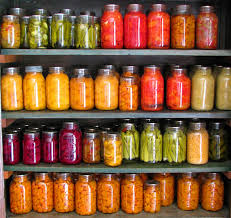Importance of Canning
go.ncsu.edu/readext?691969
en Español / em Português
El inglés es el idioma de control de esta página. En la medida en que haya algún conflicto entre la traducción al inglés y la traducción, el inglés prevalece.
Al hacer clic en el enlace de traducción se activa un servicio de traducción gratuito para convertir la página al español. Al igual que con cualquier traducción por Internet, la conversión no es sensible al contexto y puede que no traduzca el texto en su significado original. NC State Extension no garantiza la exactitud del texto traducido. Por favor, tenga en cuenta que algunas aplicaciones y/o servicios pueden no funcionar como se espera cuando se traducen.
Português
Inglês é o idioma de controle desta página. Na medida que haja algum conflito entre o texto original em Inglês e a tradução, o Inglês prevalece.
Ao clicar no link de tradução, um serviço gratuito de tradução será ativado para converter a página para o Português. Como em qualquer tradução pela internet, a conversão não é sensivel ao contexto e pode não ocorrer a tradução para o significado orginal. O serviço de Extensão da Carolina do Norte (NC State Extension) não garante a exatidão do texto traduzido. Por favor, observe que algumas funções ou serviços podem não funcionar como esperado após a tradução.
English
English is the controlling language of this page. To the extent there is any conflict between the English text and the translation, English controls.
Clicking on the translation link activates a free translation service to convert the page to Spanish. As with any Internet translation, the conversion is not context-sensitive and may not translate the text to its original meaning. NC State Extension does not guarantee the accuracy of the translated text. Please note that some applications and/or services may not function as expected when translated.
Collapse ▲
It’s that time of the year again, when we break out our pressure canners and get to work. For hours on end, our weekends are spent in the kitchen preserving our homegrown favorites. Most of us have been doing the same old song and dance for years and years. Others, like myself, might be new to the canning game.
Fresh foods are perishable because they contain a high percentage of water. The practice of canning preserves fresh food by removing oxygen, destroying enzymes, and preventing the growth of bacteria, yeasts and mold. Using proper canning methods is extremely important in keeping your family safe when eating home canned foods. Improper canning methods can result in the production of C. Botulinum, which is responsible for the illness know as Botulism. Botulism mimics a stroke and results in facial paralysis, drooping eyelids, drooling, and in severe cases, can lead to death. It is important to follow these proper canning practices:
- carefully select and wash fresh produce,
- peel according to recipe,
- hot packing many foods,
- adding acids (lemon juice or vinegar) to some foods,
- using acceptable jars and self-sealing lids, and
- processing jars in a boiling-water or pressure canner for the
correct period of time.
Purchase a science-based food preservation guide. “So Easy to Preserve” (University of Georgia Cooperative Extension), the Ball Blue Book, and the USDA Complete Guide to Home Canning are three highly-regarded home food preservation resources. The recipes in these guides have been tested for safety and quality. When you obtain your new guide, read through it prior to your first attempt at preserving. By doing this, most of your questions will be answered, and you will know what equipment you need to purchase prior to beginning. If you prefer a web-based source, check out The National Center for Home Food Preservation website at nchfp.uga.edu. This site sponsored by the University of Georgia, contains instructions for preserving foods by canning, freezing, and dehydration. The site also has instructions for ordering the “So Easy to Preserve” food preservation guide and you will also find a link to the USDA Complete Guide to Home Canning.
Please reach out to Patti Snyder, if you have any questions.




